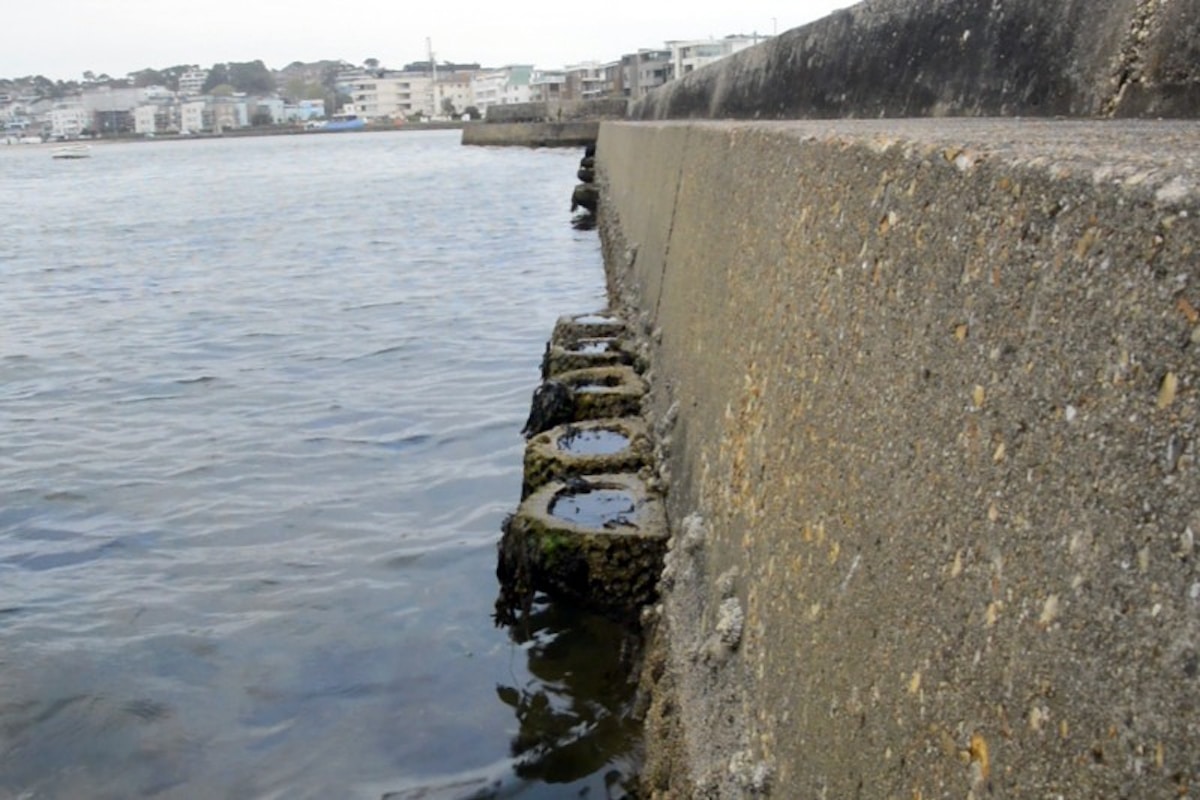Researchers Install Artificial Rockpools on Seawalls to Create Wildlife Habitats

 Why you can trust us
Why you can trust us
Founded in 2005 as an Ohio-based environmental newspaper, EcoWatch is a digital platform dedicated to publishing quality, science-based content on environmental issues, causes, and solutions.
In Bournemouth and the Isle of Wight, artificial rockpools installed on seawalls have become habitats for marine life. Researchers established the rockpools back in 2020 and are now finding them to be successful habitats in places where coastal development has restricted natural habitats.
Scientists first placed a total of 114 rockpools along seawalls at three sites in Bournemouth, UK and the Isle of Wight, UK in 2020. The rockpools, called Vertipools and developed by Artecology, are made from a low-carbon concrete material.
They have found as many as 65 species, including the Ostrea edulis native oyster species, in 45 artificial rockpools at one site in Sandbanks. The protected Ostrea edulis is an important find, as this species is vulnerable to habitat destruction, pathogens and fisheries.
“As our coastlines become more developed, marine species are seeing their natural habitats replaced by sea defenses which are harder to colonize,” Jess Bone, Ph.D. researcher at Bournemouth University, explained in a statement. “Sea level rise is also compounding the problem and is squeezing their habitats into smaller and smaller spaces. We wanted to see if giving them more rockpools could offer them a lifeline in the face of these challenges.”
In addition to the oysters, the team has also found crabs, molluscs, small fish, barnacles, sea squirts and 25 different types of seaweeds in the artificial rockpools. During high tides, the researchers even noticed bass exploring the pools.
“At low tide, we found that the rock pools provided a haven for squishy species, like sea squirts and sponges that would dry out on the seawall and not survive,” Bone explained. “Similarly, they helped delicate species, like bryozoans and some finer seaweeds, that would get bashed about by waves on the seawall and would not survive either.”
In addition to providing shelter for a wide variety of species impacted by coastal development, the higher amounts of living materials in the artificial rockpools can increase the biomass. This can help improve carbon sequestration and can remove excess nutrients from the water to prevent low oxygen levels that can harm marine life.
“This project has shown how rockpools can help us to ensure nature can continue to survive in urban coastal spaces,” Bone said. “They also give residents a chance to connect with nature, learning more about the wealth of wildlife just off the harbor’s edge and the role it plays in preserving our natural environment.”
The installation of artificial rockpools is part of the larger Marine Infrastructure Effects (Marineff) project funded by the EU. The project is designed to find ways to improve and conserve coastal ecosystems amid increasing coastal development.
Subscribe to get exclusive updates in our daily newsletter!
By signing up, you agree to the Terms of Use and Privacy Policy & to receive electronic communications from EcoWatch Media Group, which may include marketing promotions, advertisements and sponsored content.

 233k
233k  41k
41k  Subscribe
Subscribe 




